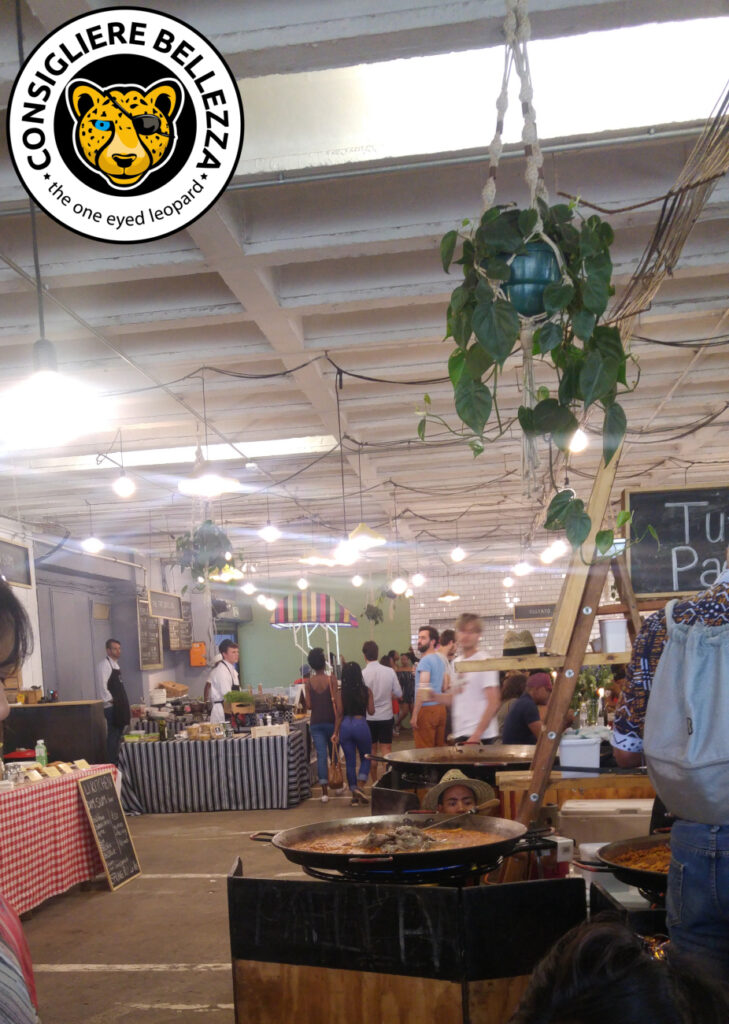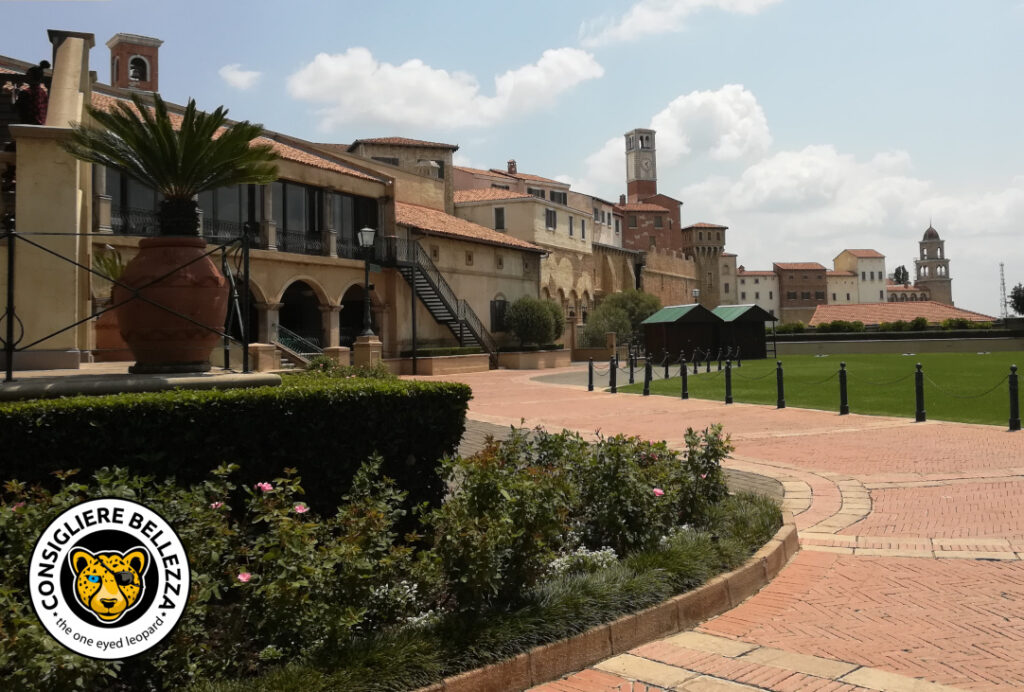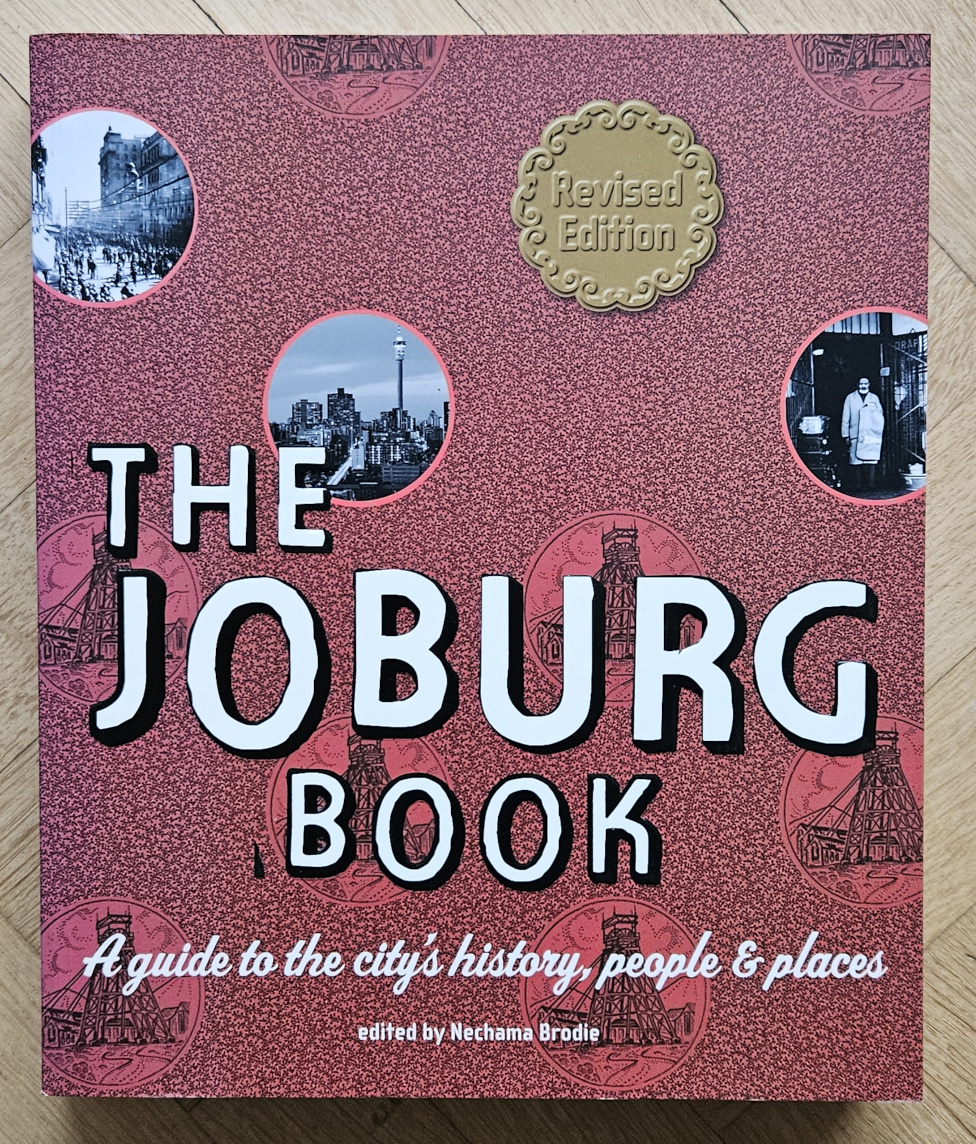Arriving in Johannesburg can mean many things. Most people arrive at the airport and are whisked away immediately. Their travel agency arranged for transport, hotel and three carefree weeks of short city visits and beautiful longer stays in nature to see the wildlife. Some people arrive to get their car or meet their driver at the airport and stick to the car till they say their farewell to South Africa. Some people arrive and board the Gautrain, that connects the airport with Park station, Rosebank, Sandton, Pretoria and some other stops. Going to Rosebank or Sandton, you can walk to your destination (a hotel), but not much further.
Nechama Brodie’s “The Joburg Book” shows what most tourists are missing, the history, heart, and the people of the city of Johannesburg and its surroundings.
Johannesburg, the city of gold (Egoli), has changed its face many times over the centuries. Only 50 kilometres west of Joburg lies the so called “cradle of humankind” where millions of years old hominid fossils had been discovered. Relicts from the iron age are not far away.
The most important changes of newer history came a few 100 years ago – first with Boer settlers from the Netherlands arriving and then 200 years later with the discovery of gold and diamonds. The Boers were farmers, religious, very conservative, and close to their community only. Till today the Afrikaaner culture, all their music and history, is shared mainly with those who speak Afrikaans.
Due to political changes in Europe, the English took over the rule of the cape colony around the year 1800.
English, Boers and native inhabitants of various backgrounds did not go along well with each other. Alliances were short and the fragmentation of the cape colony “nation” visible from the beginning.
The discovery of gold and diamonds made matters worse, as adventurers from overseas descended on the fragile status quo.
Probably South Africa has never been a safe country to travel to and within, but one blessed with incomparable natural beauty, an abundance of resources and a richness of history.

Of all the different cultures and personalities are traces left in modern Johannesburg. “The Joburg Book” lists all that I know and plenty more. It is a perfect guide when you are interested in the city and its history, and your guide book says only to leave Johannesburg as fast as possible for a safer part of the country. In Johannesburg & Pretoria you have neighbourhood markets – some of the organic food movement like known from all over the world (see picture) and some of the very rural tradition where I was feeling uncomfortable even looking from inside my guide-driven car at dead sheep being processed into muti medicine and food. The (black) guide recommended not to leave the car – not that it had occurred to me.
It is possible today to walk the city centre of Johannesburg and Pretoria (with a guide or a guided tour) and see quite a few of the monuments of old shown in “The Joburg Book”. The Carlton Hotel, the re-created Impala statues of Oppenheimer Park, the old mining district headquarters near Park Station, the zoo, the wider areas of Rosebank, the neighbouring areas, and many, many more. It is important to walk only when you know your way. Therefore, the recommendation for a guide, even when normally you travel alone and find your own way.
One can even visit the Ponte Tower in Hillbrow, once the most luxurious apartment building in Johannesburg in the 1970s, then the epicentre of danger in the dark times of the city between 1996-2010. This being South Africa, you do not walk to the Ponte Tower, you drive to the meeting point. Most of the sites named in the wonderful “Joburg Book” of Nechama Brodie can be visited, but you need to take your precautions. Precautions are most important. Most white and black South Africans of the middle classes and tourists of all colours only walk in an area with a fence (literal or through security guards) around it. This may sound stupid, but it is reality.

You will see it in Sandton, in Rosebank, at the V&A area of Cape Town, in restaurants or casinos with parks, even on certain hiking trails (you pay entry…). Montecasino in the picture, an Italian village built in greater Johannesburg with theatre, casino, restaurants and a small zoo is an example for that as well. To the visitor being used to walk freely, this can create a weird feeling after a while.
The messenges change between “all is safe here and better than in reality” and “the outside world is bad and full of killers waiting for you”. South Africa is a hard country and can be dramatic. Having visited South Africa many times and having travelled widely with South African friends, friends living there and individual tour guides, my recommendation to stay safe is to read all the bad stuff and watch the movie “Vaya” by Akin Omotoso if you can still get a copy somewhere. Afterwards you are certainly highly alerted. Then choose your tours and especially tour guides carefully and go out and see things. Having been in Johannesburg does not mean having seen the inside of a hotel or a mall in Sandton.
Black and white tour guides of various backgrounds, Jewish, Xhosa, Zulu, Christian show different things and show things different. Johannesburg has been a melting pot for centuries. “The Joburg Book” gives a good insight in different histories.
Walking in Pretoria alone with my also female (and white) tour guide, with addicts shooting up in the streets and Burger Park being closer to a campsite than to a park was memorable. Probably 40 years ago the trip would have been pretty scary for a black person for different reasons. Times change, so do fortunes.
South Africa is more than wonderful nature, Kruger Park and wildlife.
South Africa is more than Cape Town and Camps Bay and the Garden Route.
South Africa is more than fantastic food and wines at attractive prices.
South Africa is very much Johannesburg, the golden city, the frightening city.
“The Joburg Book” is the best book on the city I know. It gives short and precise pinpoints of historic sites and personalities and monuments. There are so many, the book is heavy. Buy it and read it and go there, would be my recommendation, if you want to understand about South Africa and Johannesburg.
All rights to the book belong to:
Brodie, Nechama (editor): The Joburg Book, A guide to the city’s history, people & places, 2014 (second edition), published by Pan Macmillan South Africa, Private Bag X19, Northlands 2116 and Sharp Sharp Media, 48 Rothesay Avenue, Craighill Park 2196, ISBN 978-1-77010-385-6
The movie “Vaya” by Akin Omotoso from the year 2016 shows the stories of 3 people going to Johannesburg on family matters and finding the big city (and its inhabitants) often openly hostile and sometimes life-saving. It is a great movie which I saw in South Africa in the cinema.

